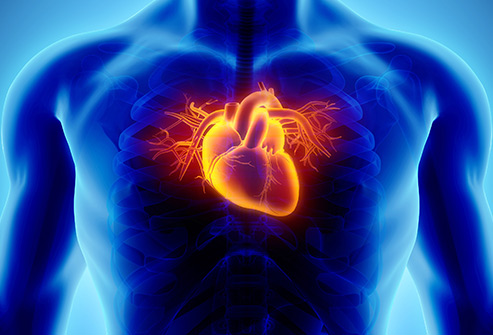Home
/
heart disease
/
Learn about heart disease prevention and treatment methods (Part One) | healthy care
Learn about heart disease prevention and treatment methods (Part One) | healthy care
Learn about heart disease
prevention and treatment methods (Part One)
Heart disease may affect any of the heart’s functions and any part of the heart. The most common heart disease is a coronary syndrome (or coronary syndrome) in its various forms and manifestations.
Coronary vessels are the blood vessels circulating on the outer side of the heart muscle and their function is to deliver blood to the heart itself.
"When does heart disease occur?"
When there is a process of stiffness (the accumulation of a layer of calcium and fat mixture) inside the coronary blood vessels, or when there is a constriction in these blood vessels, it is possible that narrowing will occur in the hollows, which hinders the delivery of blood to the heart muscle.
Any harm to the heart muscle or its ability to contract would cause a temporary or permanent decline in the heart's ability to contract.
When the heart's ability to contract is damaged, there will be a drop in the blood pumping to vital organs. This narrowing of the blood vessels causes angina pectoris, and if there is permanent damage to the heart muscle, then myocardial infarction is generated.
People who suffer from angina or myocardial infarction may feel pain or pressure on the chest wall, sometimes accompanied by sweating, feeling choked, short of breath, nausea, and a feeling of general kidney weakness. This situation constitutes an emergency requiring urgent medical intervention.
Treatment options for heart disease
Treatment options in such cases are many and varied, such as drug or catheter treatment, intending to open an expanding closed blood vessels
But the best option, in this case, is prevention such as not smoking, maintaining a balance of blood fat levels, and exercising physically. Sometimes it may be necessary to transfer the patient to the operating room to perform coronary artery bypass graft grafting. This surgery can be done quickly as emergency surgery, or as a pre-planned surgery based on the results of various tests that warrant surgical intervention.
The heart muscle may develop an inflammatory disease due to an infectious heart disease caused by viruses, due to interactions in which the immune system interferes, or from alcohol and drug use.
"Information and explanation about the heart"
There are four valves in the heart, each of which may be damaged, causing a malfunction.
The main disorders in the work of heart valves are classified into two groups:
| --- | Heart valve stenosis: affects the ability to pump blood and transport it between the different parts (chambers) of the heart, which requires more pressure in the blood pumping to reach the normal level that the heart usually pumps.
| --- | Heart valve expansion: The blood flow continues even when the heart valve is supposed to prevent the blood flow completely.
The dilated heart valve can be likened to a tap (water tap) from which water escapes, while a narrowed heart valve can be likened to a tap that does not fully open.
In the heart there is a conduction system responsible for the transmission of electrical insignia that stimulates contractions of the heart, regulating the timing of contractions and regulating the relationship between ventricular contractions and atria contractions.
Occasionally, an imbalance in the functioning of the electrical transport system may be reflected in an increased heart rate, a slowing of the heart rate, an irregular heart rate, or the absence of any clear temporal relationship between the timing of ventricular contractions and the timing of atrial contractions.
Heart disease in heart valves may be congenital (congenital disease), at which time heart murmur is expected to be heard when listening to the sound of the heart.
It may be acquired as a result of various infectious heart diseases that cause direct or indirect damage to the heart valves. Also, the process of atherosclerosis can cause damage to heart valves. The signs and symptoms of heart disease in valves include:
Shortness of breath decreased fitness and increased fatigue, coronary syndrome, arrhythmia, and frequent fainting
When a certain type of heart disease is suspected, you should refer to a family doctor or a doctor who specializes in internal diseases. Sometimes, according to various data, it may also be necessary to consult a cardiologist.
"Heart and blood circulation"
Continued ------------------------------------------------- -----




















No comments